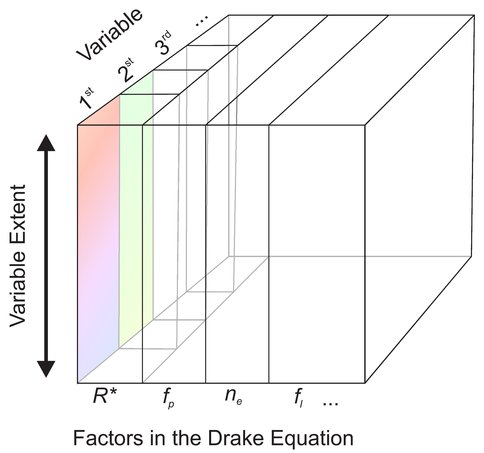2011 Annual Science Report
 University of Hawaii, Manoa
Reporting | SEP 2010 – AUG 2011
University of Hawaii, Manoa
Reporting | SEP 2010 – AUG 2011
Beyond the Drake Equation: Can We Find New Integrative Frameworks for Astrobiology Research?
Project Summary
The Drake equation (in its current formulation) is a scheme used to estimate the number of detectable intelligent aliens around us. It does so by collecting together what is considered as the leading terms that represent what we know about astronomy, planetary science, biological evolution and social de-velopment. However, after ~50 years of rapid scientific progress, much of what we have discovered challenges us to either improve our estimates of the factors in Drake’s equation, re-work the equation according to current knowledge in the field of astrobiology, or change the question that we are asking and the way we ask them altogether.
Project Progress
As part of the various activities during the January 2011 schedule of the UHNAI Astrobiology Winter School, we held some sessions regarding the well-known Drake equation. These focused on a brief introduction to the various parameters, an attempt to “guesstimate” the parameter values, according to current knowledge, and an open discussion about how to better reflect the modern questions of astro-biology. This led to a collaborative project, including many of the school’s participants and modera-tors. The first step included setting up a limited-access website for sharing notes, references and dis-cussions. Subsequently, a draft paper is being constructed from the various contributions. The par-ticipants in this project span a multitude of research interests related to astrobiology and are affiliated with past and present NAI teams, as well as other institutes with active research in the field.
With regards to the relevance of this project to our research community, we note that several key components, as stated in the NASA Astrobiology Roadmap (De Marais et al. 2008), can be recog-nized and incorporated in our discussions:
- Attempt to include contributions, both in methodology and content, from various disciplines (multidisciplinary content).
- Integration of participants from different disciplines in deriving fresh and mutually related perspectives (interdisciplinary execution).
- Cross-reviews of suggested contributions and their relation to the different astrobiology re-search niches (coordination of scientific disciplines).
- Attempt to asses the influence of suggested frameworks on the development and acceptance of astrobiology research in public discourse (recognition of broad societal interest).
- Contribution from graduate students, junior researchers and senior members of the astrobiol-ogy community to both the definition and critique of suggested ideas (education and induc-tion of young astrobiology-inclined researchers).
We have constructed an initial draft and several iterations have been done with it. There are still bits of text waiting for their respected authors and contributors. It is expected that the actual author list for the future paper will be much more condensed. We are planning on an informal meeting of the 2011 UHNAI Astrobiology winter school alumni who are taking part in this project, during the upcoming 2012 AbSciCon meeting. A paper is in mid-stages of preparation and will probably be submitted during 2012 to the Astrobiology Journal.
Open page of the limited-access website that has been set up in order to share reviews and ideas, from the different disciplines (geology, biology, astronomy, planetary science, computer science, etc.), towards integrating and constructing the paper draft.
The Drake “Cube” – A representation of the probability space, which includes “extra dimensions” for each term in the Drake equation. One dimension could be all the different variables, included in each term. Another could be the value range (or extent) for each variable.
-
PROJECT INVESTIGATORS:
-
PROJECT MEMBERS:
Gal Sarid
Project Investigator
Stephen Freeland
Co-Investigator
Jan Kleyna
Co-Investigator
Kelsi Singer
Co-Investigator
-
RELATED OBJECTIVES:
Objective 7.1
Biosignatures to be sought in Solar System materials
Objective 7.2
Biosignatures to be sought in nearby planetary systems

